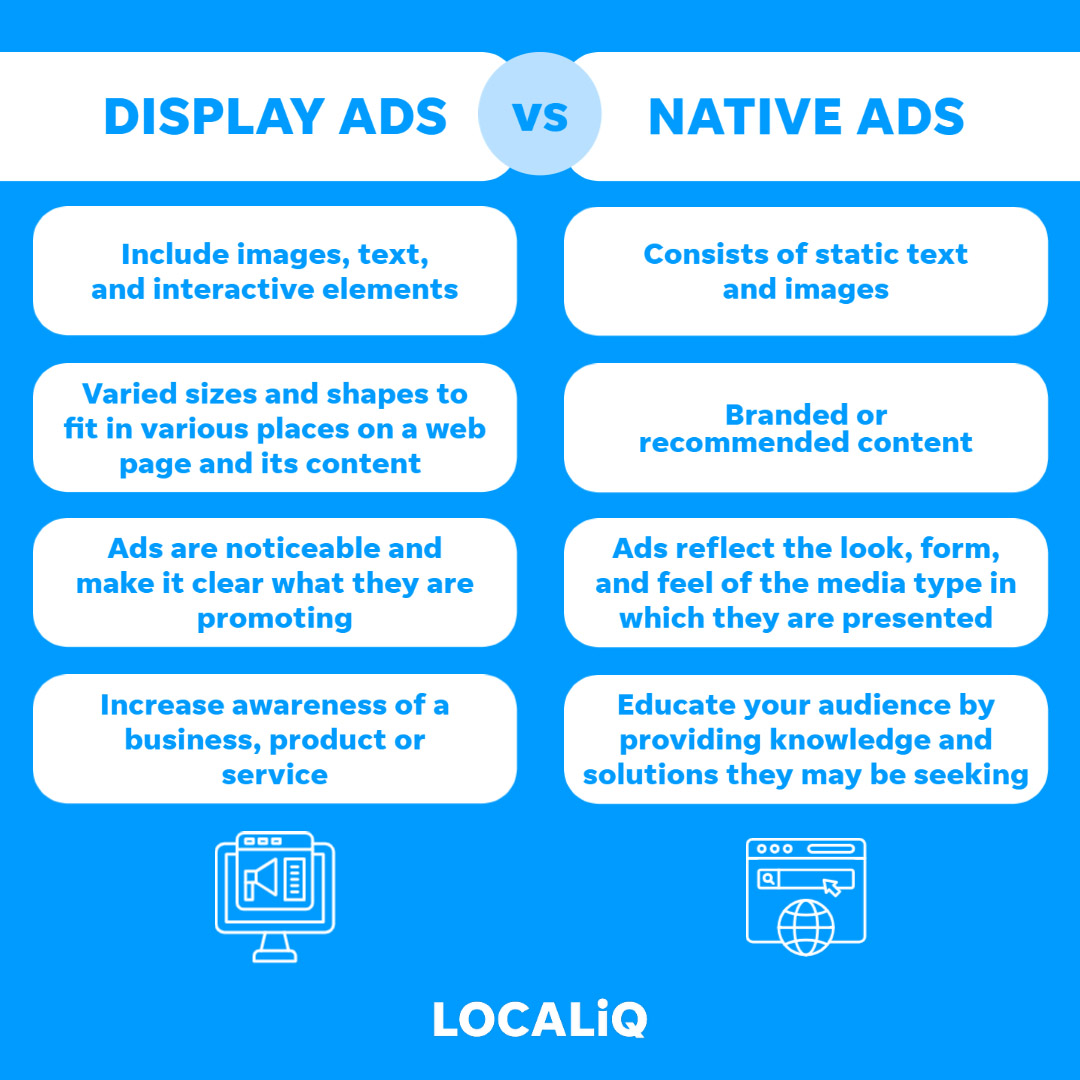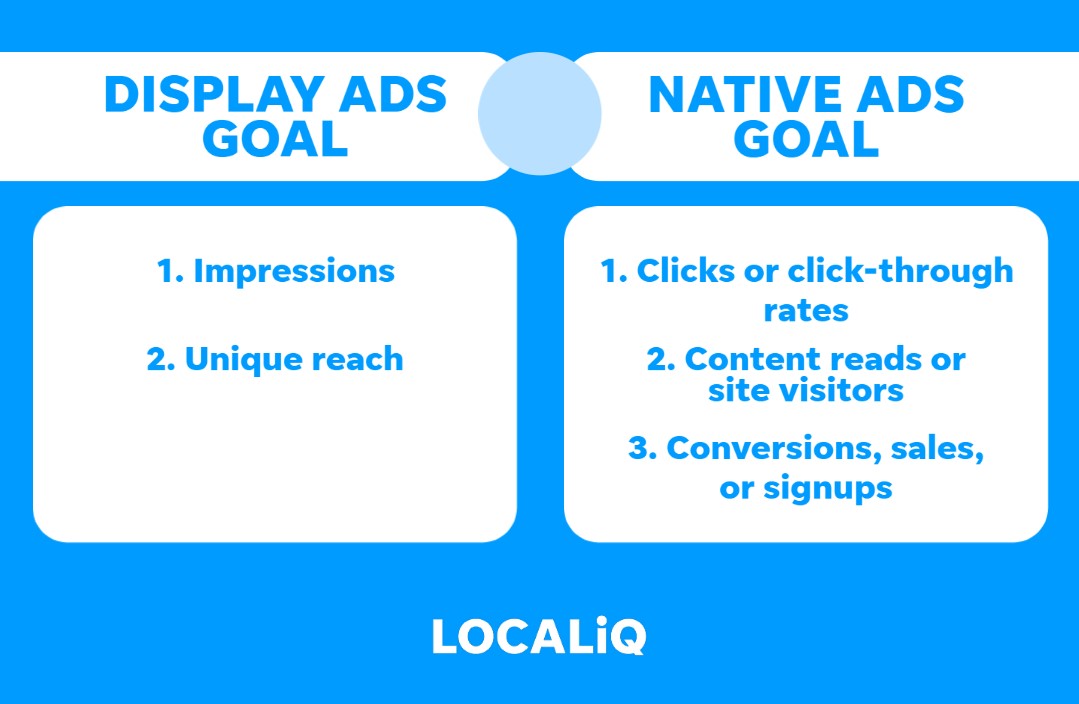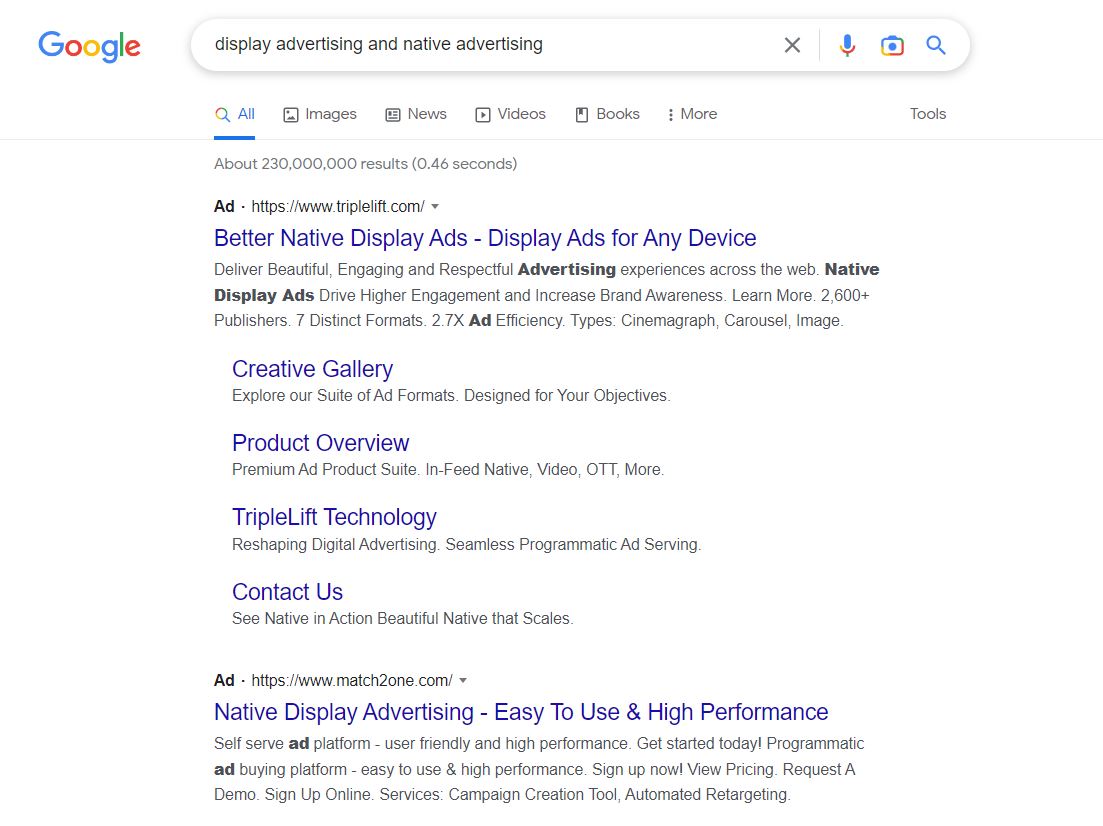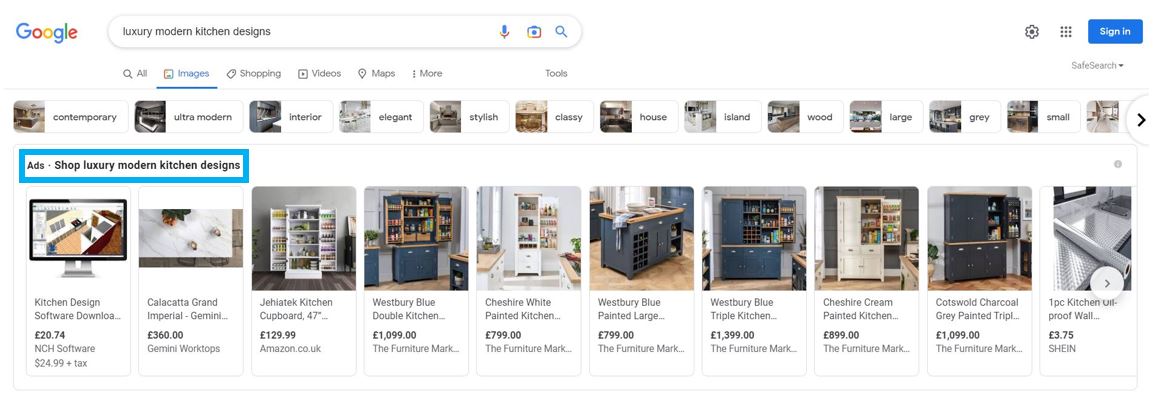Display advertising and native advertising are two popular forms of digital advertising. Both are effective at increasing brand awareness and reach, the question is, which one will work best for your business?
As we discuss and compare native ads and display ads in this blog, you may be able to make a more informed decision about which to use.
In this blog:
- What is display advertising?
- What is native advertising?
- Types of display ads
- Types of native ads
- When should you use display advertising?
- When should you use native advertising?
- Display ads vs native ads
What is display advertising?
Display advertising is an online form of advertising that communicates a commercial message through visuals. Ads such as these can be text-based, image-based, or video-based, with the overall goal of driving traffic to a website, social media platform, or another digital medium to encourage users to take a particular action.
What is native advertising?
Native adverts are presented in a way that does not interrupt the user experience. These adverts will often blend in with other content on the webpage, complementing the overall look and feel of the website. Native advertising is significantly less invasive than other types of digital advertising.
Types of display ads
Display ads can take different shapes, most of them, however, can be classified into a few categories.
Responsive ads
Every website, screen size, and type of device is taken into account in the design of responsive display ads. An advertiser might upload a few fundamental assets such as text descriptions, videos, etc. After that, the layout will then be modified depending on the user.
Remarketing ads
Remarketing ads are placed specifically to reach individuals who have visited a website but left before converting. Remarketing advertisements, for instance, may be used by e-commerce businesses to entice users to quit their shopping carts.
Interstitial ads
Advertisements that appear over a website or app content are known as interstitial ads. In most cases, an expiring timer or a button will usually display to indicate when the user can exit the window. Customers may benefit from these ads by being forced to take action, but they can also undermine user experiences.
Related reading: What Are The Different Types of Display Advertising Formats?
Level up your marketing with LOCALiQ
Subscribe to our monthly newsletter
Types of native ads
The use of native advertising is possible in all media. The following are a few of the most common types of native advertising:
In-feed ads
The most widely used form of native advertising is in-feed advertising, which was popularised by businesses like Facebook and Twitter. Its mobile-first approach and capacity to direct viewers to advertisers’ media assets contribute to its popularity. An in-feed advertisement appears within the main content of a website, it’s important that the ad is aligned with the content surrounding it. Despite being a relatively recent innovation, in-feed native advertisements have proven to be an excellent way for advertisers to provide branded content without interfering with the user experience.
Example of an in-feed native ad:
Paid search ads
A paid search advertising strategy can help businesses drive traffic to their websites by paying search engines, like Google and Bing, to position their ads above organic results on search engine results pages (SERPs).
You can tell the difference between paid and organic results by looking for the word ‘Ad’ before the listing.
Example of a paid search ad:
Suggestion widget ads
Widgets that deliver advertisements through sponsored placements are called suggestion widgets. The information appears on news or media websites to promote relevant information from advertisers.
Example of a suggestion widget ad:
Search and promoted listings ads
Other examples of native advertising are sponsored ads and product listings that display next to Google search results.
When should you use display advertising?
If you’re looking to expand the reach of your campaign, then display advertising is a great way to target larger audiences. Viewability may be measured, and interactive banners can be used to make them stand out.
The following are some situations in which display advertising is effective:
- Improving brand awareness
Display ads can be the perfect solution if your business is currently having trouble building brand awareness and visibility. Large audiences will be exposed to your adverts, and target clients will form a favourable first impression if you use effective copy and imagery.
- Targeting a specific audience
Display ads may be the ideal choice if the audience for the product or service you’re promoting is of a smaller size. By segmenting your audience based on interests, you can save money and make sure your business is seen by your ideal customers.
- Retargeting
Display adverts are a great tool to use as part of your overall retargeting strategy if visitors have already interacted with your business in some way. Retargeting an online shopper who abandoned their cart is one example, as is showing a display ad for a premium eBook to a customer who has already read one of your blog posts.
In general, the ideal method to employ display ads is to make use of striking colours, graphics, and interactive components to instantly catch users’ attention and compel them to click.
When should you use native advertising?
In order to influence a user to take a certain action after clicking on an advert, native advertising is your best choice.
Listed below are a few additional situations where native advertising will be useful:
- Advertising on a limited budget
Due to the likelihood of a greater click-through rate (CTR) than display advertising, native advertising is significantly more cost-effective in comparison.
Better click-through rates can lower your cost per click because advertisements are frequently acquired on a cost-per-thousand (CPM) basis. Even if it takes longer to persuade a user to read the content or fill out a form, the cost per action will be decreased if conversion rates are kept constant.
- To boost brand content
Because it is getting harder and harder to obtain more exposure, SEO is difficult because new information doesn’t appear for a while. A necessity for brand content to be enhanced on-demand led to the development of native advertising.
Whilst organic marketing is important, tactics like SEO can take a while to generate visible results. Using native advertising will help get your content in front of an audience much quicker. This is great for time-sensitive campaigns.
Display ads vs native ads
There are a few main differences between native advertising and display advertising in addition to how they look and where they appear:
 Image Source| LOCALiQ.
Image Source| LOCALiQ.
Both native advertising and display advertising have their benefits, but whether or not you use a combination of both or only one of them will depend on the individual needs of your business.
If you’re struggling to decide between the two, then it’s worth considering the end goal of your marketing campaign.
 Image Source| LOCALiQ.
Image Source| LOCALiQ.
Although there are many differences between display ads and native ads, their appearance and feel are the most obvious distinction. Display advertisements are made to resemble eye-catching banners and intend to stand out to the user due to their colour, positioning, and branding on the page they are delivered on.
While native is made to effortlessly integrate with a website’s content when done well, people might not even notice they are interacting with ads; they just feel like they are reading content.
Contact LOCALiQ’s experts to learn more about how we may assist you with any advertising-related questions you may have.
Level up your marketing with LOCALiQ
Subscribe to our monthly newsletter









